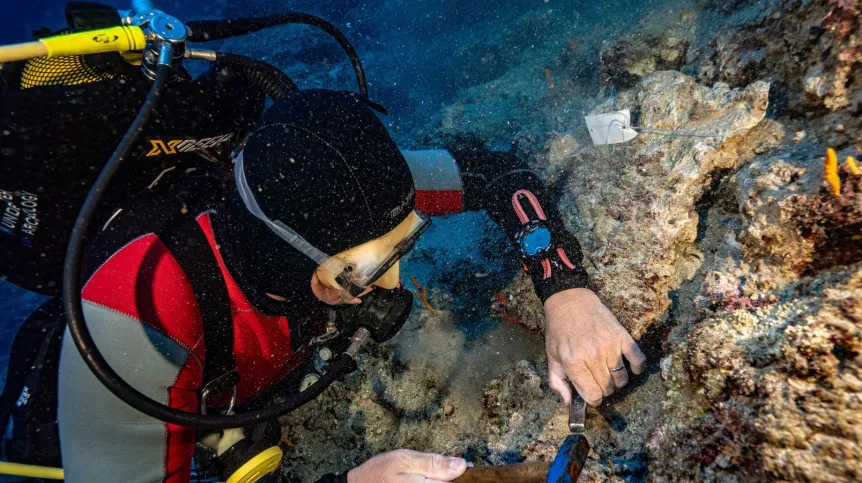
Polish scientists have discovered Bronze Age ingots in what is believed to be the world’s oldest shipwreck.
The scientists from the Centre for Underwater Archaeology at the Nicolaus Copernicus University in Toruń have been investigating the wreck which was discovered off the coast of Turkey.
The ship had been loaded with copper to be used in the production of bronze.
'The most impressive aspect is the age of this find. If not the oldest, it is one of the oldest wrecks. It confirms the very early, complex scale of copper trade. I think that further analyses may further increase the value of this discovery,’ said the research’s Dr. Andrzej Pydyn.
While the find does not resemble a shipwreck in the common sense of the word (there is no rusty iron structure or wooden skeleton of the boat), according to the approach of underwater archaeologists, the cargo itself may also be considered a wreck, in this case - the cargo of a Bronze Age ship found off the coast of Turkey.
According to the researchers, the copper ingots did not end up in the water for any reason other than a maritime incident. One of the arguments they give is the arrangement of the discovered cargo.
'The ship had to be pushed onto the rocks and sank quite quickly. It was heavy and when the hull was damaged, it dropped fast, and the cargo slid down the slope, which is very steep in this place. In some places there were single ingots, but here and there, due to the shape of the bottom, one ingots would lie on top of the other,’ Dr. Pydyn said.
The basic artefacts at the site are characteristic copper ingots in the shape of an oxhide, each weighing about 20 kg. So far, about 30 pieces have been recovered.
The main tasks of the researchers were to prepare documentation, primarily photogrammetric (reconstructing the shapes, sizes and relative positions of objects in the field based on photograms), 3D models of the seabed and the artefacts located on it, and to extract ingots.
The researchers explain that the age of the wreck can be determined based on the shape of the copper ingots, which have changed over the years.
'It appears that the currently discovered wreck is the oldest one. The ingots that we find typologically are among the earliest - from the 16th or maybe even 17th century BCE. In fact, we are already moving back from the Late Bronze Age to the Middle Bronze Age. (...) According to older archaeological literature, in the Late Bronze Age it was the Mycenaeans who controlled shipping and trade in the eastern part of the Mediterranean Sea. However, our wreck must have sailed in times when the Minoan culture still dominated,’ Dr. Pydyn said.
The researchers estimate that there must be more wrecks from the Late Bronze Age in these areas, because the scale of the copper trade was very large at that time. 'During that period, copper ore was mined only in a few places in the Mediterranean, and the demand for copper was huge. In Central Europe, metallurgical production was based on contacts with the Anatolian, Balkan, Caucasian and Carpathian sources, while for the eastern part of the Mediterranean the primary source this raw material was Cyprus. The demand for copper was high in the developing civilizations: Mycenaean, Minoan, and Egyptian. The scale of contacts was therefore very large, and the more ships sailed, the more of them sank,’ Pydyn said.
The discovered wreck awaits the next seasons. According to the researchers, the extraction of copper from the bottom should take them two to three years.
The following researchers from the Centre for Underwater Archaeology of the Nicolaus Copernicus University in Toruń participated in the research project: Dr. Andrzej Pydyn; Dr. Mateusz Popek and student Szymon Mosakowski. The work of the international team was coordinated by Professor Hakan Oniz from Akdeniz University.
PAP - Science in Poland
akp/ zan/ kap/
tr. RL













